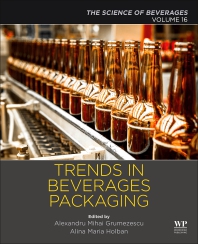After years of focusing on energy and performance, “recovery” may be the new buzzword in the sports and energy segment. New products are focusing on what happens after exercise rather than during the activity itself. A number of recent sports and energy products have addressed post-activity recovery:
- Gatorade G Series Pro 03 Recover platform includes a dairy-based Protein Recovery Shake and a Protein Recovery Drink that also has electrolytes and carbohydrates. The company suggests consuming the shake 20 to 50 minutes after activity and then an additional serving 2 hours later.
- In Japan, The Coca-Cola Co. created Aquarius Pro Recovery Shot in conjunction with Adidas. The drink contains soy peptides and is said to be formulated for runners and athletes.
- On the energy drink side, Jones Soda has reformulated Whoopass Energy Drink to contain yerba mate, grape extract and green tea polyphenols, which it says “have been linked to supporting muscle recovery.” Re-engineering the product takes advantage of the growing crossover between energy drinks and sports drinks.
- Halo Labs also created a recovery drink in an energy drink format. Code Blue Recovery Drink contains agave nectar, prickly pear juice, N-acetyl cysteine, sustamine, calcium, magnesium, potassium and vitamins B12, B6, C and A. The drink is said to reduce inflammation in addition to aiding hydration.
Recovery helps create balance
The concept of a recovery drink could resonate particularly well with consumers in today’s post-recession atmosphere. The word is used frequently in today’s news media as people search for signs of financial recovery. And “recovery” provides a necessary balance to the image of energetic activity. Mintel’s Inspire consumer trend-spotters suggest that many of today’s products, such as recovery drinks, lower alcohol beers or discount lines from high-end fashion designers, are popular because they provide a sense of balance against the trends on the opposite extreme.
The emotional appeal of recovery drinks is likely to exceed the actual need for these products, as the average American workout is only 40 minutes in length. That means true recovery needs are likely to be limited to a small audience.
That said, consumer research shows the recovery concept is popular, even if the need for the products is only imagined. Nearly half of U.S. consumers who purchase nutrition and energy bars, for example, use them to aid recovery after exercise, and 39 percent use them to help build muscle, presumably in conjunction with a workout program.
The idea also carries over to sports drinks. However, fewer consumers currently use the drinks for that purpose. Nearly a third of sports drink consumers in the U.K., for example, say they think sports drinks are good for rebuilding energy after sports and other physical activities.
Interestingly, that is slightly more than the percentage of consumers who say the drinks are good for extra endurance during exercise, which is the more traditional positioning of these products. This seems to indicate that even with traditional products, most consumers already have their sights and expectations set on how they will feel after the workout.
More claims cause confusion
Claims made by sports drinks and other performance beverages can be complex and confusing to consumers. Recovery drinks are likely to be confusing as well, given that some brands contain protein while others contain herbal ingredients and amino acids; all are intended to provide some kind of recovery benefit. Drink-makers can overcome this obstacle by combining education about their products with information about working out in general.
Knowledge is a top item on the consumer exercise wish list, with more than half of U.S. consumers who exercise saying they wish they knew more about different types of exercise.
Additional tools might include online fitness or activity trackers, public relations campaigns that enlist the media and product information targeted at fitness professionals, such as personal trainers.
Nearly a quarter of U.S. consumers who exercise say they do not currently use, but would like to try, an online fitness tool. Such applications could be a key way to let consumers know when to take a day off to let muscles recover and when recovery products might be most effective in an exercise program. BI

